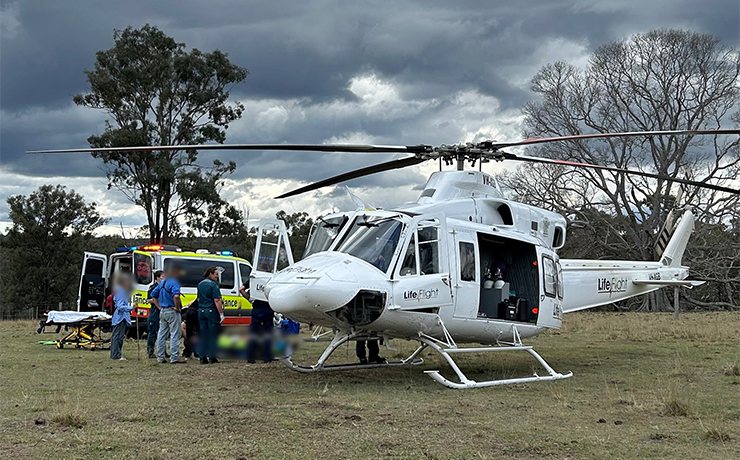
December 27, 2012
The emergency helicopter services that fly in and out of the South Burnett will operate under a new funding model – and may even be flying different types of aircraft – if the State Government adopts the recommendations of a review into Queensland’s aeromedical services released just before Christmas.
The review, which began in 2011, was initiated by concerns over the future financial viability of the State’s many rescue services as well as upcoming changes to Civil Aviation Safety Authority (CASA) regulations which will have an impact on the aeromedical fleet.
For example, the AGL Action Helicopter Rescue Service will be forced to replace one of its current choppers when new CASA regulations come into effect within the next few years.
The AGL service currently operates three helicopters, two BK-117s and a Bell 206. The Bell is a single-engine helicopter, and under new regulations this type of helicopter will no longer be permitted to fly over suburban areas.
AGL Action Helicopter Rescue Service Chief Pilot Brent Chamberlain told southburnett.com.au today the service would probably either convert the Bell to a training role or sell it to help fund the purchase of a replacement helicopter.
The “Review of Aeromedical Helicopter Services In Queensland” was commissioned by Queensland Health to discuss the existing arrangements between the State Government and Community Helicopter Providers. It aims to ensure “operator safety and financial viability” over the next 10 years.
A review of the current funding model was conducted by Treasury while an operational review of the helicopter fleet was carried out by consultants Nova Systems.
The summary report has recommended the establishment of a State-based regulatory framework to oversee all emergency aeromedical helicopter and fixed-wing services in Queensland.
Contracts with the providers – which expire mid-2013 – would be re-negotiated to remove the limited number of base hours as the basis of funding, to be replaced by funding on a fixed retainer with all hours purchased on an agreed rate.
Mr Chamberlain said the review was also proposing a “sharing model” where services could share helicopters, spare parts and even pilots.
He said there were no surprises in the report for helicopter rescue services. It would also have no affect on the proposed amalgamation of services between the AGL Action Helicopter Rescue Service and CareFlight NSW.
“We knew it was coming and our CEOs have all made submissions to the government,” he said.
“We think it is a great thing the government is reviewing the aeromedical model and we are looking forward to working with them in the future when the networks unfold.”
The helicopter services now have until January 22 to make submissions on the summary report.
Mr Chamberlain said the AGL service’s CEO Dave Donaldson would be meeting with the CEOs of the other community helicopter providers to discuss the report before this date.
At the same time that he released the review, Health Minister Lawrence Springborg announced the State Government would increase by $450/hr the “overfly” payment made to helicopter rescue services for hours flown above their current “deed of agreement” with the State Government
Mr Chamberlain said the AGL Action Helicopter Rescue Service welcomed the “overfly” increase, which will be backdated to July 1.
Last year, the AGL service was allotted 600 hours by the State Government but actually flew more than 1000 hours. The extra payment will help to partially re-imburse the service for these extra hours.
- Download a full copy of the Summary Report: Review of Aeromedical Helicopter Services (1.47Mb)
[Photo: Courtesy AGL Action Rescue Helicopter Service]























